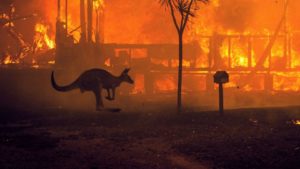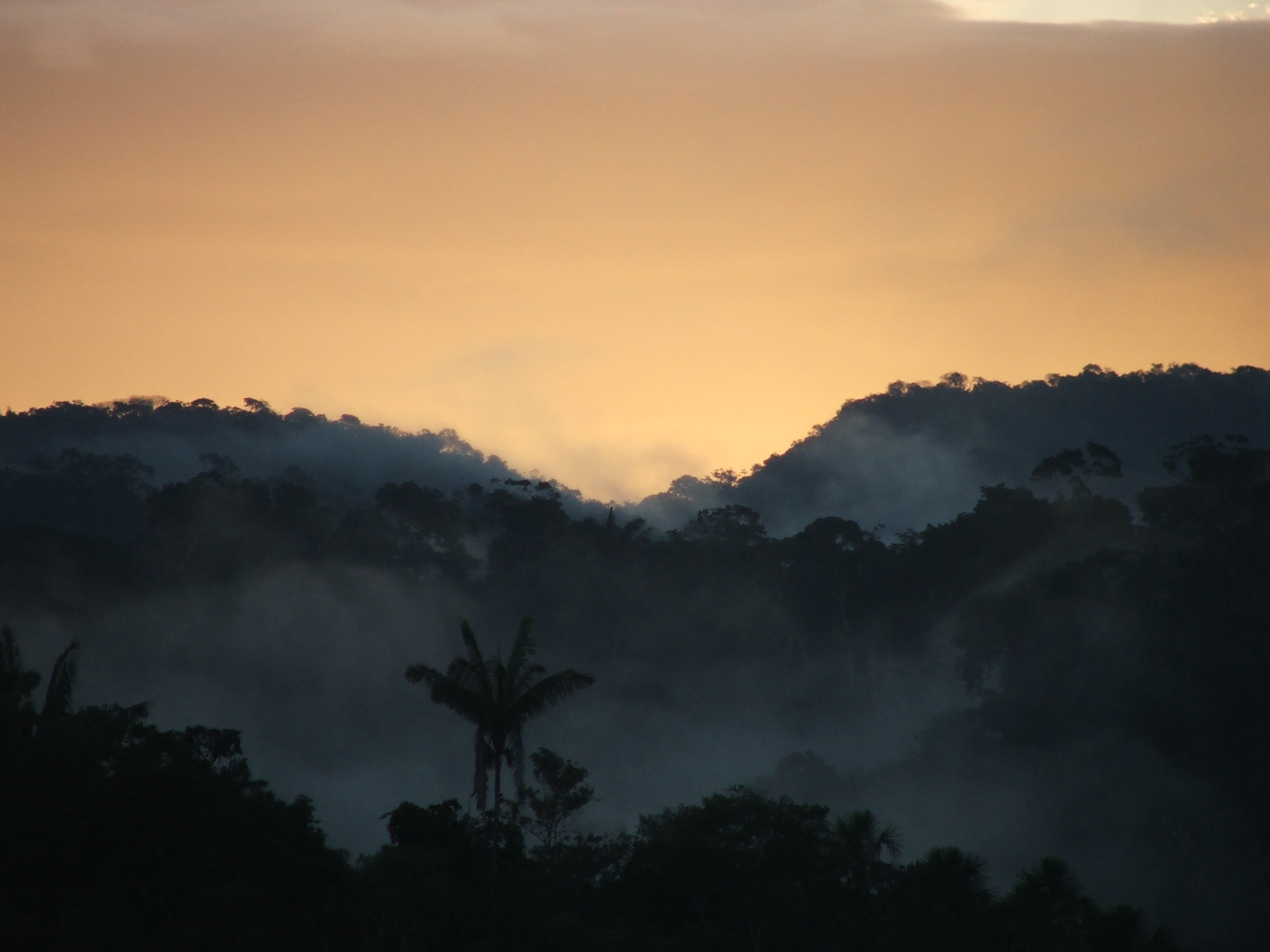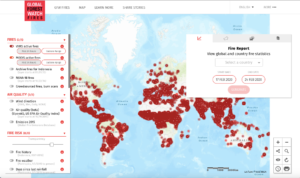2019 saw an increase in forest fires across the globe. In Indonesia, fires set to clear land for palm oil ravaged ancient rainforests and in Siberia and Alaska, unprecedented wildfires tore through millions of hectares of frozen lands. At the start of 2020, things look just as worrying with Australia only recently emerging from a national state of emergency, after flames engulfed vast areas of its East Coast. Reckless land use and climate change are largely to blame for the rise in forest fires across the world.

Matthew Abbott/The New York Times via ReduxA kangaroo rushes past a burning house in Lake Conjola, Australia, Dec. 31 2019.A kangaroo rushes past a burning house in Lake Conjola, Australia, Dec. 31 2019.
Matthew Abbott/The New York Times via Redux
At Ecosphere+, we represent three forest conservation projects that work to protect the Amazon rainforest in Peru, an ecosystem that has also recently come under huge threat from fire – the Cordillera Azul National Park, Tambopata-Bahuaja Biodiversity Reserve and Nii Kaniti: Community Forest Management with Indigenous Communties. We are grateful that these projects have not been involved in any large-scale fires. Here, we explain the fire prevention methods and activities that our projects undertake as well as the mechanisms that the Verified Carbon Standard uses to account for any fire damage and the way that forest carbon projects systemicly address some of the root causes of fires in the Amazon.
How do we combat forest fires in our projects in the Peruvian Amazon?
Both our Cordillera Azul and Tambopata projects are nationally protected areas where the risk of fires is low as human settlements lie outside the parks and illegal forest clearing for agriculture is closely monitored and prevented by rangers who undertake a programme of forest surveillance. Our Nii Kaniti project is different in that it encompasses community forest land where indigenous people live. Local communities do use fire as part of traditional land clearing practices but are responsible for ensuring carefully controlled burns for which they receive training.
Our NGO partners on the ground that implement these projects, CIMA and AIDER, monitor the incidents of fire via remote sensing and park guard reports so that they can respond quickly to any fire. These projects also have prevention and response measures in place to address the risk of fire.
In addition to our project specific actions, the Peruvian Government has several policies and practices in place to safeguard against fire. The National Fire Administration of Peru (INBP) is by law the governing body in charge of the country’s fire prevention, control and extinction. The Forest Service (SERFOR), which includes organisations such as INDECI, COEN, COER, SERNANP, among others, has developed the National Plan for the Prevention and Reduction of Forest Fires. In addition, SERNANP has developed its strategy of Forest Fire Risk Management in the National System of Natural Areas Protected by the State, which covers our three Peruvian project areas. These include guidelines to prevent, reduce and combat the occurrence of these events. SERNANP has also been training new forest rangers and firefighters to deal with emergencies.
There is also an increasing availability of open source technologies and methods to detect fire. Small fires are generally a precursor to larger deforestation so spotting them quickly is invaluable. These technologies include Fire Spot created by NASA and Global Forest Watch Fires.
How do standards play a role?
The Verified Carbon Standard (VCS) has certified ours and numerous projects around the world. This standard includes a methodology and set of criteria to ensure that verified carbon credits remain ‘permanent’, or representative of real and long-lasting emissions reductions and even account for extraordinary events such as fires. This is managed by a mechanism called a buffer pool, or a bank of credits which cannot be sold on the market. If carbon from a land-based project is emitted into the atmosphere, which can happen for various reasons including by forest fire, these buffer credits are cancelled to ensure that verified carbon credits available for sale are still representing real emission reductions.
A risk assessment tool is used in this process and is critical for verifying and ensuring the validity and effectiveness of Verified Carbon Units. At validation and subsequent verification, projects must assess the risk of fire. Higher risk scores lead to a higher percentage of buffer credits being set aside from the emissions reductions achieved.
Natural Climate Solutions
Deforestation for agricultural and livestock purposes is one of the main causes of forest fires. The damage from large scale clearing heavily disrupts the core processes that give rainforests their name and identity – the ability to absorb, store and recycle water as rainfall. As the soil dries out and the tree cover is lost, the forest shifts from being fire-resistant to fire prone.
Forests and other natural climate solutions play an essential role in the fight against climate change. They gift us some of the greatest opportunities to mitigate emissions and increase sequestration. A recent study highlighted that natural climate solutions can provide a third of the emissions reductions needed to keep global warming below 2 degrees, in addition to being highly cost-effective.
Forest carbon projects such as Tambopata, Nii Kaniti and Cordillera Azul attach an economic value to the carbon stored in the forest, therefore presenting an incentive to keep forests alive. These projects make trees worth more when standing than they are cut down. This economic incentive to protect forests reduces deforestation and deforestation-induced forest fires. But the benefits don’t stop there; saving forests has a plethora of co-benefits. These include reducing drought, helping to prevent hunger, protecting ecosystems and even empowering women. You can read how our projects are doing just this.
Private sector engagement is key
The world requires not only national and international policy commitments to fight climate change, but also key private sector engagement.
We believe the extent of the destruction in the Amazon and forests worldwide reinforces the need for our model of improved forest management of natural areas by working closely with local communities. Ecosphere+’s work on the ground in these vulnerable and threatened ecosystems is strengthening their resilience and working to improve local livelihoods so that they become more regenerative than destructive. Carbon finance is a critical part of the solution. Funding from carbon markets, along with well-designed policies and (ever-increasing) programmes that boost natural climate solutions, is key in putting us on track to meet our critical global climate targets.


